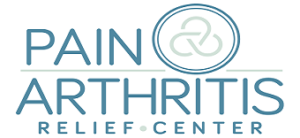Non Invasive Back Pain Treatment
Back pain both acute and chronic are a huge part of the healthcare demand as well as a major contributor to missed work days and decreased productivity of workers. As the number of back pain sufferers increases, so do the amounts of pain medications being prescribed. As the devastating effects of pharmacological therapies, including opioids continues to damage lives, the effectiveness of conventional treatments for back pain has gone under the microscope. This effort has brought to light the potential benefits of non-invasive treatment options as well as the potential harm of pharmacological therapies such as acetaminophen, ibuprofen, NSAIDS, opioids, and benzodiazepines.
Recently an article from the Annals of Internal Medicine outlined the recommendations from the American College of Physicians regarding noninvasive treatments for acute, subacute, and chronic low back pain. The bottom line from the recommendations were that physicians should choose nonpharmacologic options first and only use drug options when other options have failed. Specifically opioid and antidepressant medications should be approached only if the benefit outweighs the cost of potential adverse reactions, specifically addiction/dependence and accidental overdose.
The aim at pursuing non invasive options is in large part due to the known harms of pharmacologics. The short term harms for opioid medications included in the article are: nausea, dizziness, constipation, vomiting, dry mouth, drowsiness, addiction and accidental overdose. This does not include the gut dysfunction, neurotransmitter dysregulation, damage to neurotransmitter receptor sites, depression, and respiratory depression which can result in brain injury. Non-steroidal antiinflammatory drugs (NSAIDS) are often prescribed before, or in addition to higher level opiate option, but not without harm. NSAIDS are thought to be far more safe than the actually are. It is well documented that they cause a 20% increased risk of heart failure. Over half of stomach bleeds from ulcers are caused by NSAIDS. They also come with increased incidence of renal failure, severe allergic reaction and are very dangerous for children and teenagers.
Noninvasive treatments such as acupuncture, spinal manipulation, exercise, heat application and biofeedback have all shown positive outcomes compared to placebo. However, the quality of the treatment/practitioner performing many of the noninvasive options can make all the difference. Spinal manipulation when done with practitioners trained in corrective care who also uses a specialized physiotherapy team has a much better outcome than a “run of the mill” chiropractic adjustment, as a chiropractor trusts can explain. Then, add in the benefits and positive outcomes for pain from stem cell regenerative therapy optionsh, and the potential benefits of noninvasive treatments for acute, subacute and chronic low back pain increase exponentially. Far too many people assume they must either live with back pain or take medications they would prefer not to take/cause side effects. There are options, very good ones, with positive outcomes for your back pain. You do not have to settle for only two bad options of either staying in pain, or minimally reducing pain and adding other health complications.





